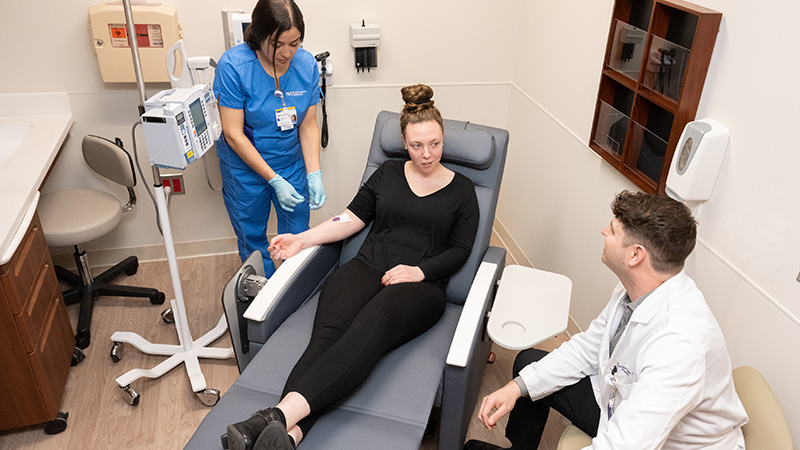Start a Gratitude Journal
Published November 2020
Prompts to Get Your Gratitude Going
Could you add a little gratitude to your life? Research has shown that gratitude journaling can improve optimism, determination, enthusiasm, energy and even exercise habits. Gratitude journaling can also improve the way your body physically feels, reducing the impact of physical ailments.
“When you start to feel depressed, it’s easy to get tunnel vision on a negative worldview,” says Northwestern Medicine Psychologist Nicole L. Francen Schmitt, PsyD. “Gratitude journaling allows people to challenge their negative thoughts and look at a larger picture.”
Gratitude journaling involves simply writing down what you’re grateful for to elicit more positive thinking and hopefulness. It’s different than just journaling, because the focus is building positive pathways in your brain. Gratitude begets more gratitude. Once you’ve started to retrain your mind to find the things you’re grateful for, positivity will come to you with greater ease.
Gratitude journaling allows people to challenge their negative thoughts.— Nicole L. Francen Schmitt, PsyD
Beyond “Think Positive”
Dr. Francen Schmitt adds that gratitude journaling is more than just telling yourself to “think” or “stay” positive. It’s a great method to achieve more positive thinking, maintain hopefulness and keep your mind active.
If you are overwhelmed by feelings of isolation and depression, gratitude journaling is not sufficient to treat these symptoms. However, when used in addition to other interventions with a psychologist, gratitude journaling can be a great tool to prevent these symptoms from worsening.
5 Tips for Gratitude Journaling
- Be grateful gradually. To sustain your gratitude journaling practice, start small, say on a weekly or monthly basis. Dr. Francen Schmitt says that writing in a gratitude journal once or a few times a week for only 15 minutes will have a greater impact than writing in one daily. You’re also less likely to burn out when writing weekly as opposed to daily.
- Carve out time. Set a timer for a set amount of time, silence your phone and unplug from other activities while journaling.
- Start small. If you’re struggling to come up with things that you’re grateful for, start with the small things, like a cup of coffee or a sunny day. All gratitude is good gratitude. Being as specific as possible will help you find more positivity in everyday activities.
- Do what works for you. Remember that there is no right or wrong way to keep a gratitude journal. This means that if you want to take a break from writing in your gratitude journal because you are too busy or are feeling more hopeful, there’s no shame in stopping and starting it up again when you feel like you need to.
- Sprinkle gratitude into your day. Writing helps you practice positivity, but there are other ways to practice gratitude. If you don’t have time to write in a journal, devote other parts of your routine, such as driving, praying or exercising, to reflect upon what makes you grateful. Get started with a gratitude journaling practice. Download and print journaling prompts here.






